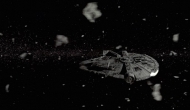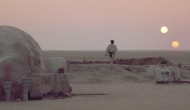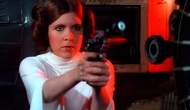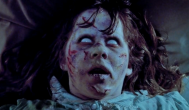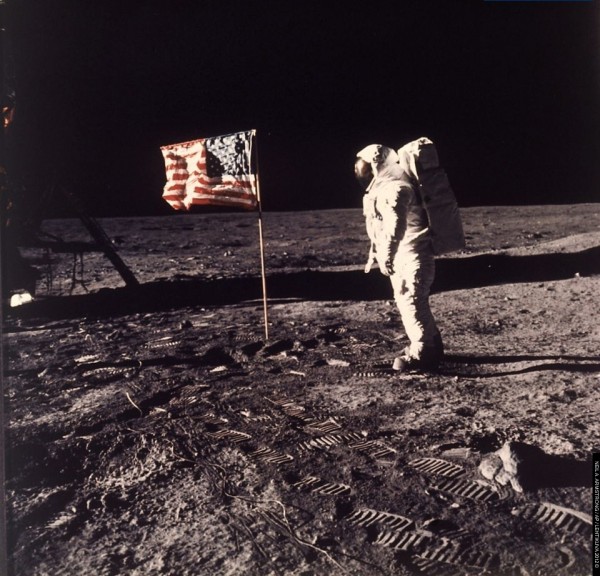 Today marks the 45th anniversary of Neil Armstrong’s historic walk on the moon.
Today marks the 45th anniversary of Neil Armstrong’s historic walk on the moon. 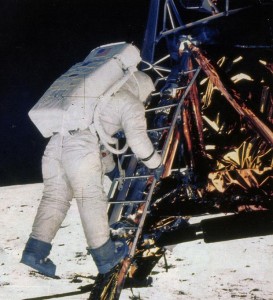 After winning a coin toss with co-pilot Buzz Aldrin to see who would take the historic first step, Armstrong opened the hatch of Apollo 11 and slowly descending a small step-ladder to the moon’s surface, literally setting foot where no man had gone before, uttering the famous line “That’s one small step for [a] man, one giant leap for mankind.” And so the United States won the so-called “space race” with our dread enemies at the time, the Russians, beating them to the moon and ushering in a new space age alive with previously unknown possibilities. Or did we? Conspiracy theorists have long referred to Armstrong’s lunar stroll as the “Nevada Moon Landing,” a reference to the belief that the entire landing was faked, along with the subsequent moon landings that followed between 1969 and 1972, filmed on a sound stage at a top-secret location in the Nevada desert – a cosmic style sleight of hand brought to you by the folks at NASA, with a little help from Hollywood, and specifically one man in particular, famed film director Stanley Kubrick.
After winning a coin toss with co-pilot Buzz Aldrin to see who would take the historic first step, Armstrong opened the hatch of Apollo 11 and slowly descending a small step-ladder to the moon’s surface, literally setting foot where no man had gone before, uttering the famous line “That’s one small step for [a] man, one giant leap for mankind.” And so the United States won the so-called “space race” with our dread enemies at the time, the Russians, beating them to the moon and ushering in a new space age alive with previously unknown possibilities. Or did we? Conspiracy theorists have long referred to Armstrong’s lunar stroll as the “Nevada Moon Landing,” a reference to the belief that the entire landing was faked, along with the subsequent moon landings that followed between 1969 and 1972, filmed on a sound stage at a top-secret location in the Nevada desert – a cosmic style sleight of hand brought to you by the folks at NASA, with a little help from Hollywood, and specifically one man in particular, famed film director Stanley Kubrick. 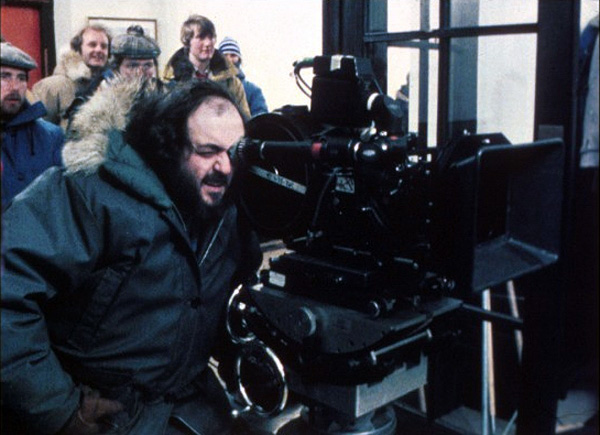 Just prior to the Apollo 11 mission, Kubrick had recently completed his film 2001: A Space Odyssey, based on a short story by Arthur C. Clarke (who then wrote the book based on the screenplay co-written with Kubrick). The film had been greeted with astonishment by the viewing public. The story of a robot-gone-mad known as Hal, 2001 told the story of man’s earliest pre-caveman beginnings spanning the millenniums of our continuing human evolution into the far off and far out future in a way that had never been seen before. Who better than to craft the illusion of the moon landing for the viewing public than the detail-obsessed and hyper-methodical Kubrick? Who better to craft the fiction of America’s shining technological achievement? There’s that word – shining.
Just prior to the Apollo 11 mission, Kubrick had recently completed his film 2001: A Space Odyssey, based on a short story by Arthur C. Clarke (who then wrote the book based on the screenplay co-written with Kubrick). The film had been greeted with astonishment by the viewing public. The story of a robot-gone-mad known as Hal, 2001 told the story of man’s earliest pre-caveman beginnings spanning the millenniums of our continuing human evolution into the far off and far out future in a way that had never been seen before. Who better than to craft the illusion of the moon landing for the viewing public than the detail-obsessed and hyper-methodical Kubrick? Who better to craft the fiction of America’s shining technological achievement? There’s that word – shining.
The Shining Based on a book by Stephen King, The Shining is the story of a writer, Jack Torrance, played in the film by Jack Nicholson, who takes his family to a remote hotel that is closed for the winter. There he experiences a bout of cabin fever, before going mad and attempting to murder his family. It’s a classic film, one of Kubrick’s best, and filled with a variety of signature Kubrick touches like one point perspective, use of the color red, and layers of symbolism that take the viewer inside the mind of a man going insane.
Kubrick’s Use of One Point Perspective But is it more than that? Jay Weidner certainly seems to think so. In the award-winning documentary, Room 237, directed by Rodney Asher, Bill Blakemore, Geoffrey Cocks, Juli Kearns, John Fell Ryan, as well as the aforementioned Weidner, all analyze Kubrick’s 1980 film, The Shining, finding in it different hidden motifs that they believe relate to the death of Native Americans, the Holocaust, and the moon landing. Jay Weidner, in particular, draws some fascinating conclusions, laying out a detailed case that Kubrick made The Shining as a kind of confession of his participation in the bogus Apollo moon landings, presumably as a kind of safeguard should the US government try to murder him as thanks for his work. Since that first moon landing in 1969, every detail of the photographs and video from Apollo 11 has been poured over by now, searching for inconsistencies that would betray the true nature of the supposedly bogus mission. Among the most interesting are: 1. The US flag that the crew of Apollo 11 planted on the lunar soil appears to waver in an unseen wind. Since space is a vacuum, there is no wind. 2. Multiple shadows appear to be cast upon the moon by the Apollo 11 module and the astronauts, as if there were multiple light sources. Since the shadows would be the result of a single light source, namely the sun, multiple shadows would be impossible. 3. In numerous photos from the Apollo missions, there are no stars present in the background. The infinity of space is black. 4. Particularly compelling is Weidner’s diagram of what he believes is evidence of front screen projection technology in the moon landings, a technique Kubrick used in making 2001. Analyzing numerous photographs from the Apollo 11 mission, Weidner convincingly demonstrates the line where he believes the sound stage comes to an end and the projection begins.
Front Screen Projection? Additional analysis of The Shining provides a variety of opportunities to believe that Kubrick indeed may have had a hidden agenda in creating the film.
Apollo 11 Sweater Of course, whether or not you believe the assertions of Room 237, and the other attempts to debunk the validity of the moon landings, is entirely up to you.
**You should like Shea Magazine on Facebook HERE!
Tony Shea ( Editor-in-Chief, New York)
Tony Shea is based in New York, having recently moved from Los Angeles after more than a decade on the sunny coast. His short films have won numerous awards and screened at major festivals around the world including Comic-Con. As a musician, he is the lead singer for Los Angeles rock n’ roll band Candygram For Mongo (C4M) candygramformongo.com who has been a featured artist on Clear Channel Radio’s Discover New Music Program and whose songs have been heard on Battlestar Gallactica (Syfy Channel) and Unhitched (Fox) among other shows and films.
- Web |
- More Posts (236)


![Let's Go to the Empire State Building - Shall We? [PHOTOS]](https://sheamagazine.com/wp-content/plugins/special-recent-posts-pro/cache/MjAwMTAwbm9JTUdfMzkxNjE=.jpg)
![Let's Go to Chinatown, Shall We? [PHOTOS]](https://sheamagazine.com/wp-content/plugins/special-recent-posts-pro/cache/MjAwMTAwbm9jaGluYXRvd24tMi1idy0=.jpg)

![Sunset - Pelham Shore Park - Long Island Sound [PHOTOS]](https://sheamagazine.com/wp-content/plugins/special-recent-posts-pro/cache/MjAwMTAwbm9JTUdfMzM3MC1SRVNJWkU=.jpg)






![Scenes from Washington Square Park - NYC [PHOTOS]](https://sheamagazine.com/wp-content/plugins/special-recent-posts-pro/cache/MjAwMTAwbm9JTUdfNDA1Mg==.jpg)
